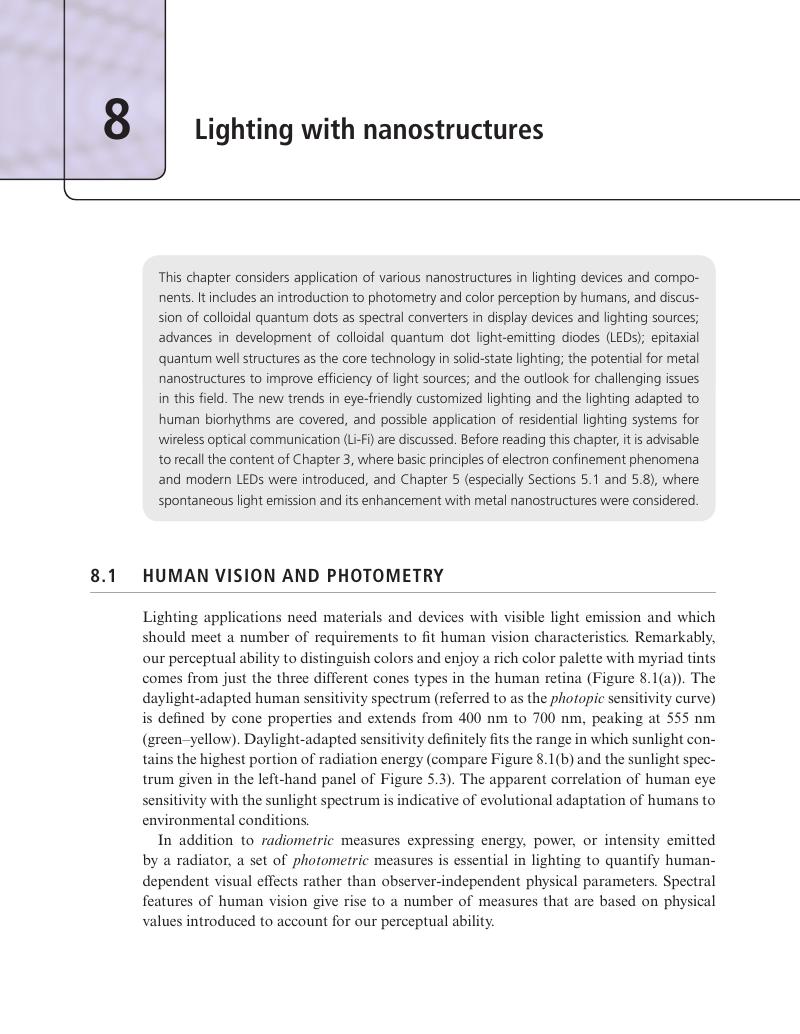8 - Lighting with nanostructures
from Part II - Advances and challenges
Published online by Cambridge University Press: 23 November 2018
Summary

- Type
- Chapter
- Information
- Applied Nanophotonics , pp. 229 - 277Publisher: Cambridge University PressPrint publication year: 2018
References
Further reading
References
- 1
- Cited by

